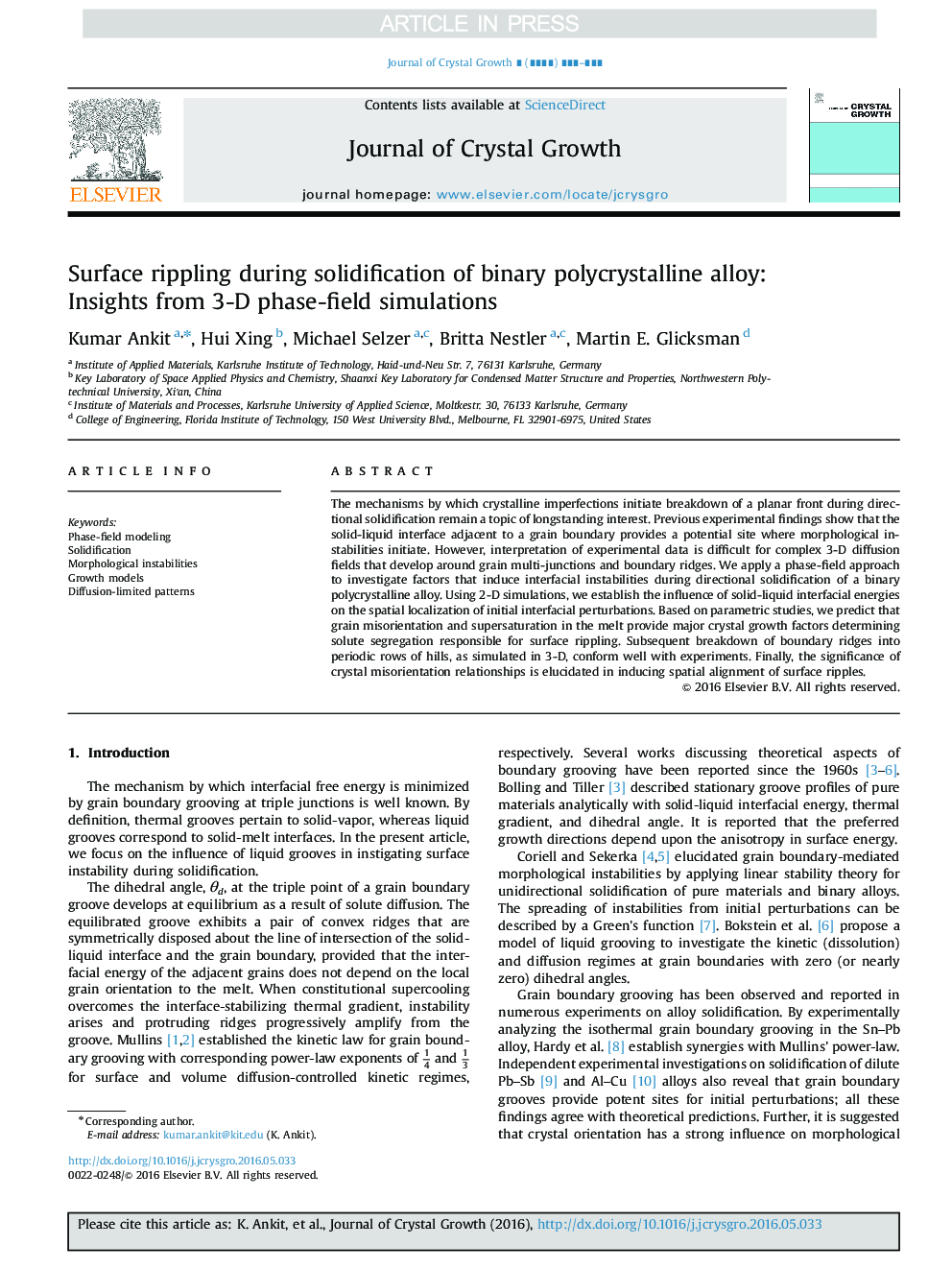| Article ID | Journal | Published Year | Pages | File Type |
|---|---|---|---|---|
| 5489706 | Journal of Crystal Growth | 2017 | 8 Pages |
Abstract
The mechanisms by which crystalline imperfections initiate breakdown of a planar front during directional solidification remain a topic of longstanding interest. Previous experimental findings show that the solid-liquid interface adjacent to a grain boundary provides a potential site where morphological instabilities initiate. However, interpretation of experimental data is difficult for complex 3-D diffusion fields that develop around grain multi-junctions and boundary ridges. We apply a phase-field approach to investigate factors that induce interfacial instabilities during directional solidification of a binary polycrystalline alloy. Using 2-D simulations, we establish the influence of solid-liquid interfacial energies on the spatial localization of initial interfacial perturbations. Based on parametric studies, we predict that grain misorientation and supersaturation in the melt provide major crystal growth factors determining solute segregation responsible for surface rippling. Subsequent breakdown of boundary ridges into periodic rows of hills, as simulated in 3-D, conform well with experiments. Finally, the significance of crystal misorientation relationships is elucidated in inducing spatial alignment of surface ripples.
Related Topics
Physical Sciences and Engineering
Physics and Astronomy
Condensed Matter Physics
Authors
Kumar Ankit, Hui Xing, Michael Selzer, Britta Nestler, Martin E. Glicksman,
